Understanding Insulin Resistance & What You Can Do About It – Dr.Berg
BLOOD SUGAR SUPPORT: https://shop.drberg.com/blood-sugar-support
Having trouble understanding insulin resistance? Watch this video to learn everything you need to know.
Timestamps:
0:00 What is insulin resistance?
3:30 What happens when you’re insulin resistant
5:45 How much sugar do you need?
6:50 Symptoms of insulin resistance
9:00 What to do about insulin resistance
In this video, I’m going to talk about insulin resistance. If you’ve had a hard time understanding insulin resistance, I’m going to break it down in this video.
Your pancreas, which is located in the left lower quadrant by your ribcage, is responsible for creating a hormone called insulin. Insulin is triggered by anything that contains sugar or turns into sugar.
Insulin circulates the body and removes sugar from the blood. Your blood sugar should stay right around 100 (mg/deciliter). When it gets higher than this, you can develop a blood sugar problem or type 2 diabetes.
Eating a lot of sugar causes too much insulin to release, which drives your blood sugar way down. Over time, your cell receptors put the breaks on insulin. This is known as insulin resistance because your cells are resisting insulin.
In turn, this causes your insulin to go even higher to try to compensate for the blocked receptors. Eventually, the pancreas begins to wear out.
Diabetes can cause a lot of problems in the body. First, you are going to be hungry often. Why? Because insulin has another function—it helps your cells absorb nutrients. So when your cells block insulin, they don’t get the nutrients they need to function correctly. This causes constant hunger and cravings for things like carbs.
Insulin resistance also causes:
• Fat storage
• Inability to lose weight
• Nutrient deficiencies
• Low energy
• Digestive issues
• Bloating
• High cholesterol
After developing insulin resistance, here’s what you can do about it:
• Start a ketogenic diet
• Avoid ALL sugar and carbs (not just some)
• Increase your potassium
• Consume 7-10 cups of vegetables a day
• Increase vitamin B1 using nutritional yeast
• Have protein with breakfast
Dr. Eric Berg DC Bio:
Dr. Berg, age 57, is a chiropractor who specializes in Healthy Ketosis & Intermittent Fasting. He is the author of the best-selling book The Healthy Keto Plan, and is the Director of Dr. Berg Nutritionals. He no longer practices, but focuses on health education through social media.
Follow Me On Social Media:
Facebook: https://bit.ly/FB-DrBerg
Instagram: https://bit.ly/IG-DrBerg
Anchor: https://bit.ly/Anchor-DrBerg
TikTok: https://bit.ly/TikTok-DrBerg
Send a Message to his team: https://m.me/DrEricBerg
ABOUT DR. BERG: https://www.drberg.com/dr-eric-berg/bio
Disclaimer:
Dr. Eric Berg received his Doctor of Chiropractic degree from Palmer College of Chiropractic in 1988. His use of “doctor” or “Dr.” in relation to himself solely refers to that degree. Dr. Berg is a licensed chiropractor in Virginia, California, and Louisiana, but he no longer practices chiropractic in any state and does not see patients so he can focus on educating people as a full time activity, yet he maintains an active license. This video is for general informational purposes only. It should not be used to self-diagnose and it is not a substitute for a medical exam, cure, treatment, diagnosis, and prescription or recommendation. It does not create a doctor-patient relationship between Dr. Berg and you. You should not make any change in your health regimen or diet before first consulting a physician and obtaining a medical exam, diagnosis, and recommendation. Always seek the advice of a physician or other qualified health provider with any questions you may have regarding a medical condition.
#keto #ketodiet #weightloss #ketosis
-
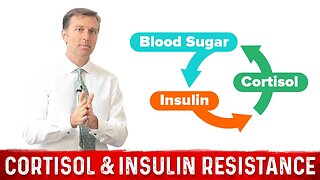 7:37
7:37
Dr. Eric Berg
7 years agoCortisol Resistance & Insulin Resistance Explained by Dr.Berg
18 -
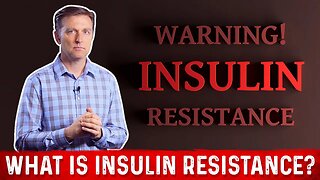 6:28
6:28
Dr. Eric Berg
7 years agoWhat Is Insulin Resistance? – Dr. Berg
28 -
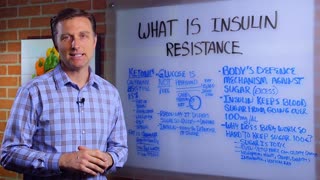 6:28
6:28
Prosciencetruth
1 year agoWhat Is Insulin Resistance? – Dr. Berg
481 -
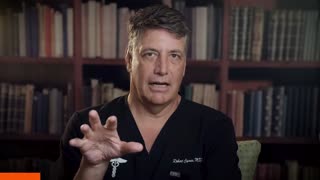 22:16
22:16
Fan account of Dr. Robert Cywes
1 month ago0369 THE SCIENCE BEHIND TREATING INSULIN RESISTANCE IN DIABETES (1&2)
29 -
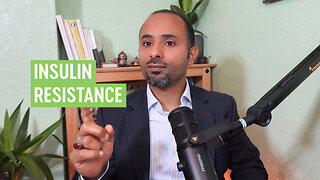 8:47
8:47
Wellness Impact | Type 2 Diabetes Coaching
2 months agoUnderstanding Insulin Resistance to Overcoming Diabetes
51 -
 8:02
8:02
Dr. Becky Fitness
2 months agoYou May Have Insulin Resistance If…
299 -
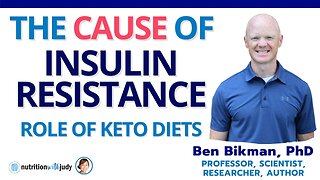 1:08:59
1:08:59
Nutrition with Judy
2 years agoExpert's Finding on the Cause of Insulin Resistance - Dr. Ben Bikman
138 -
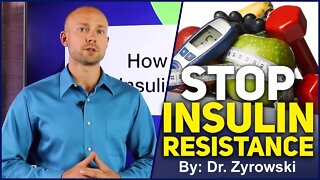 13:16
13:16
DrNickZyrowski
4 years agoHow To Reverse Insulin Resistance | The Ultimate Guide
109 -
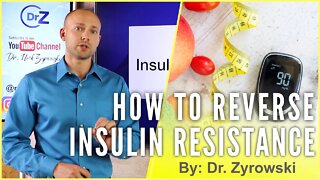 14:43
14:43
DrNickZyrowski
4 years agoInsulin Resistance Explained | A Complete Guide To Fixing Blood Sugar
18 -
 5:39
5:39
Dr. Becky Fitness
1 year agoWhat Does HbA1c Mean & How to Lower It | Prevent Type 2 Diabetes
5371